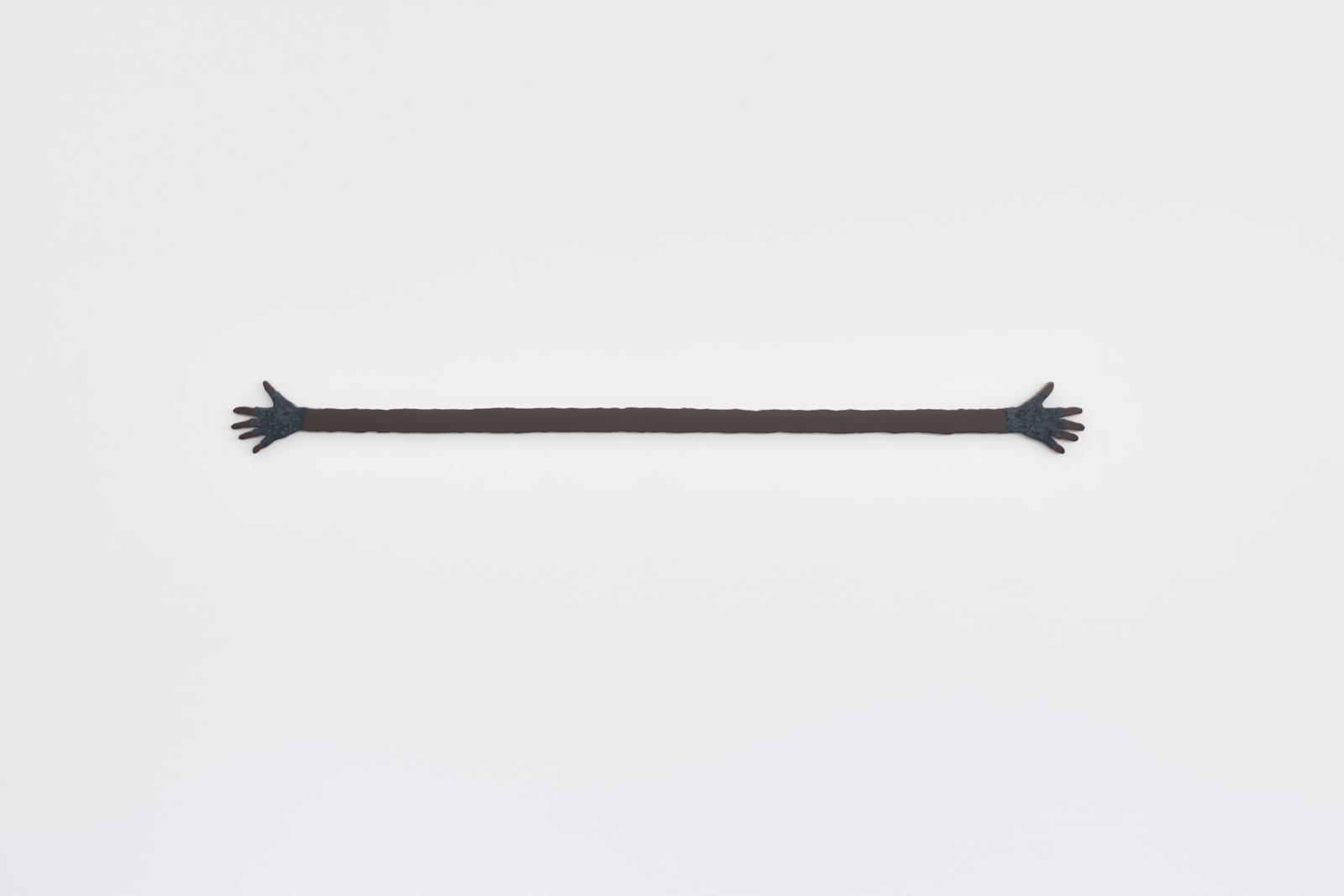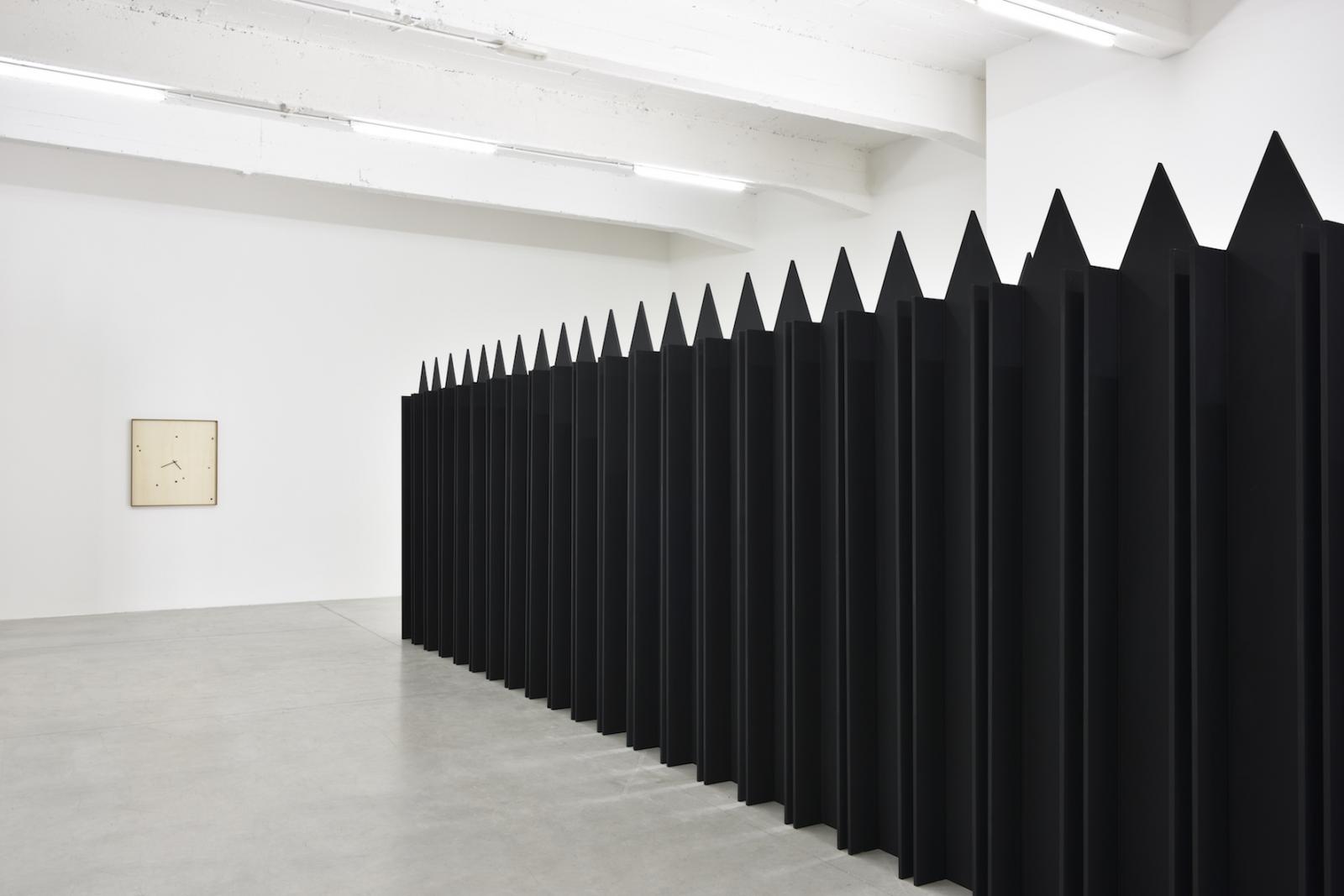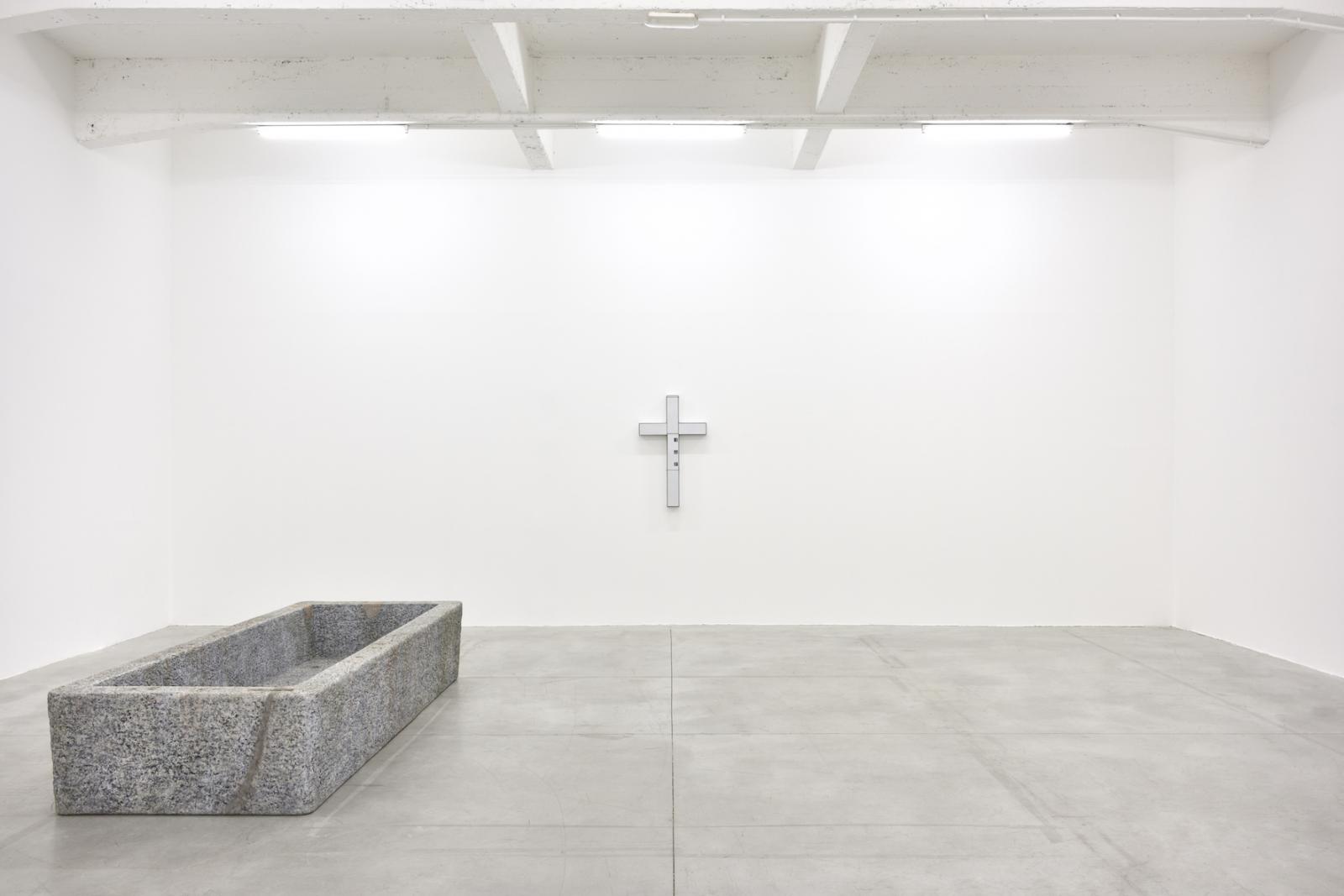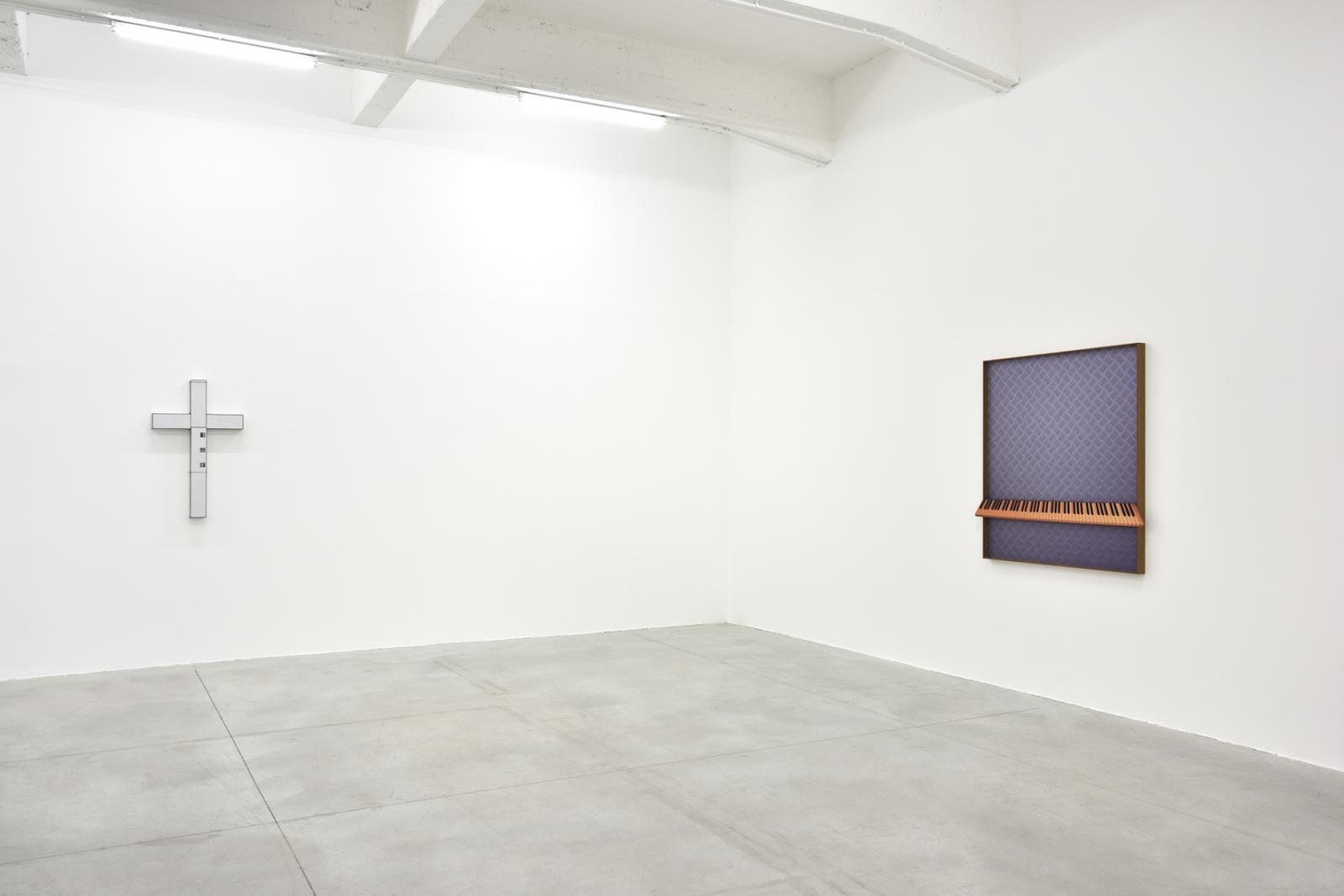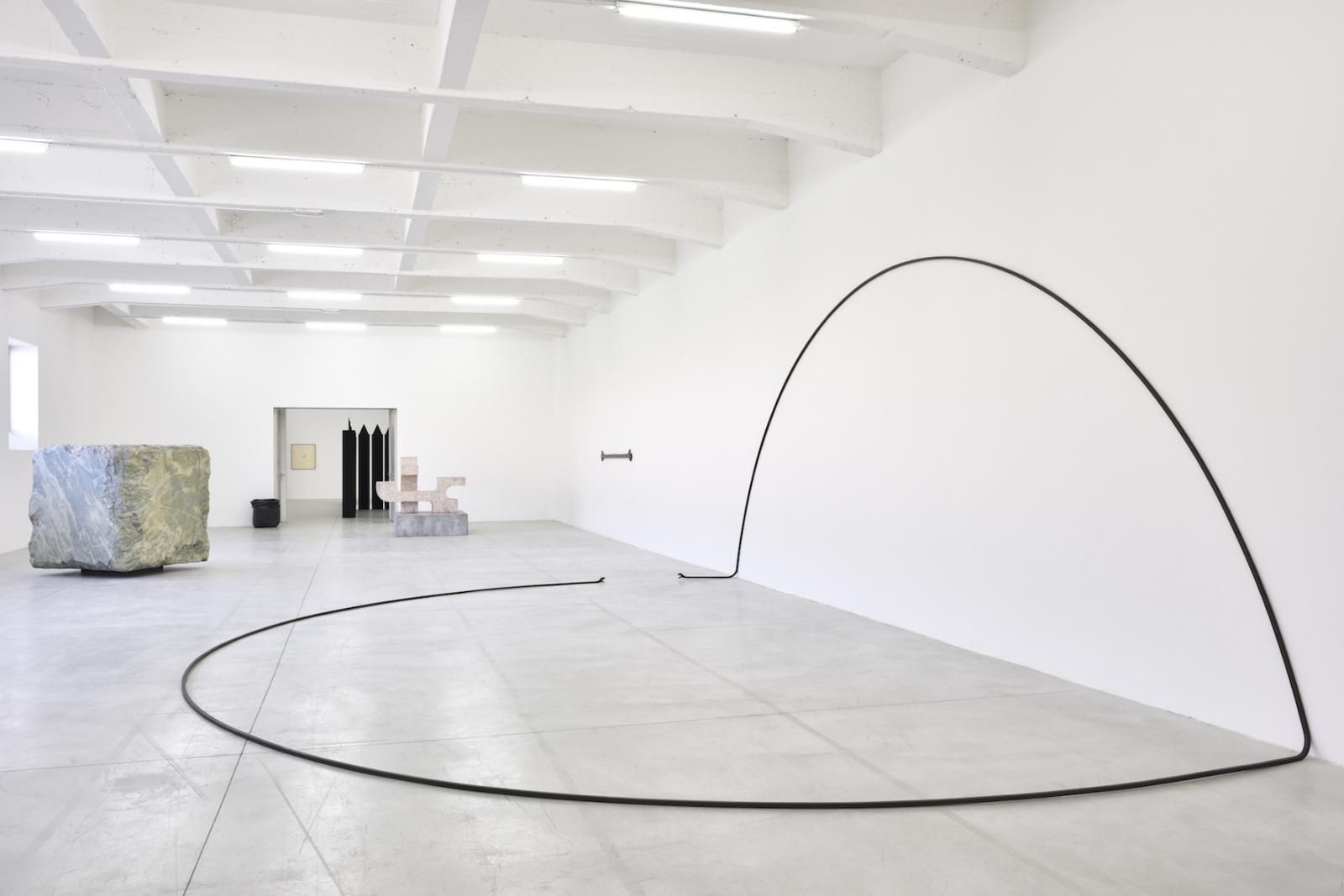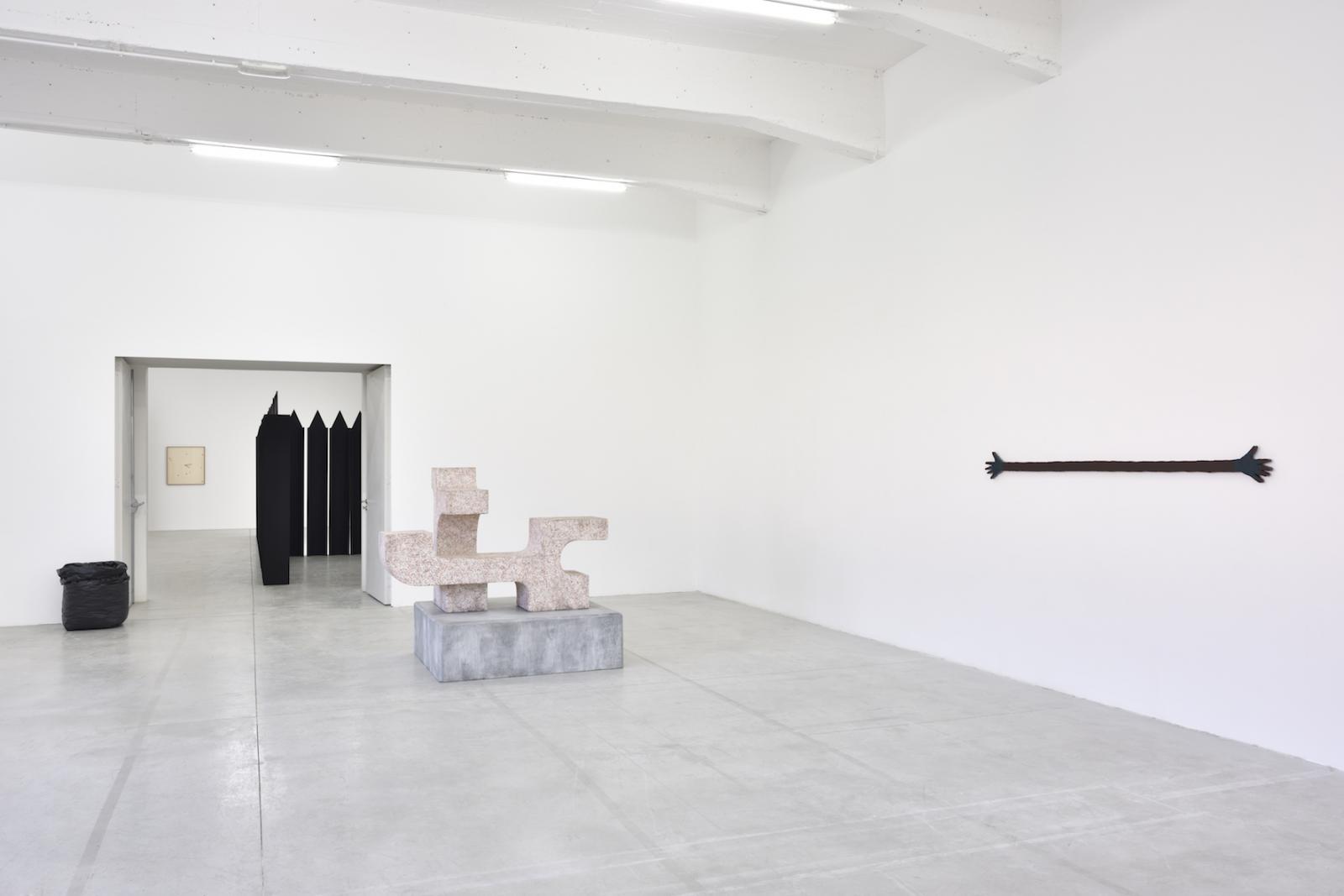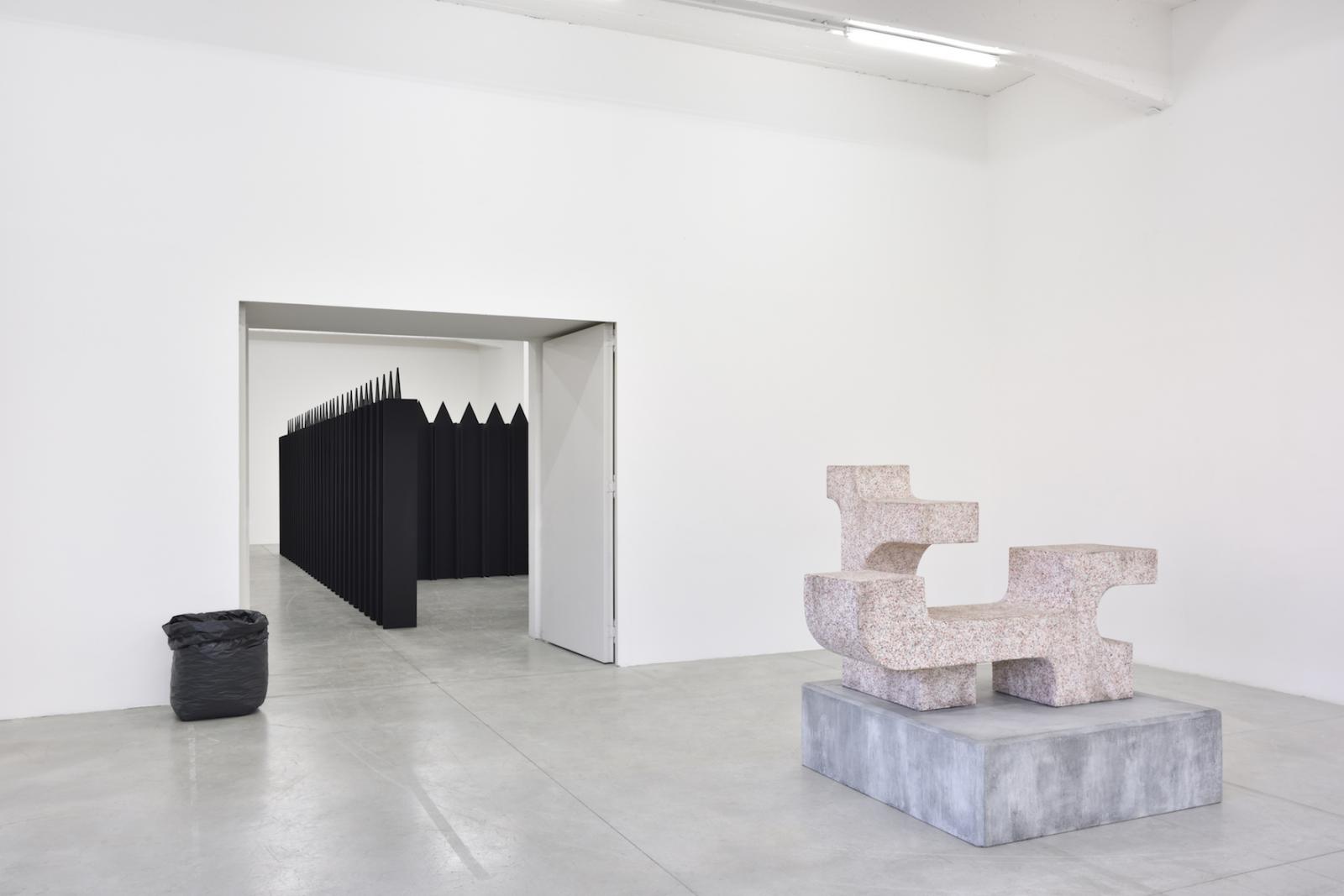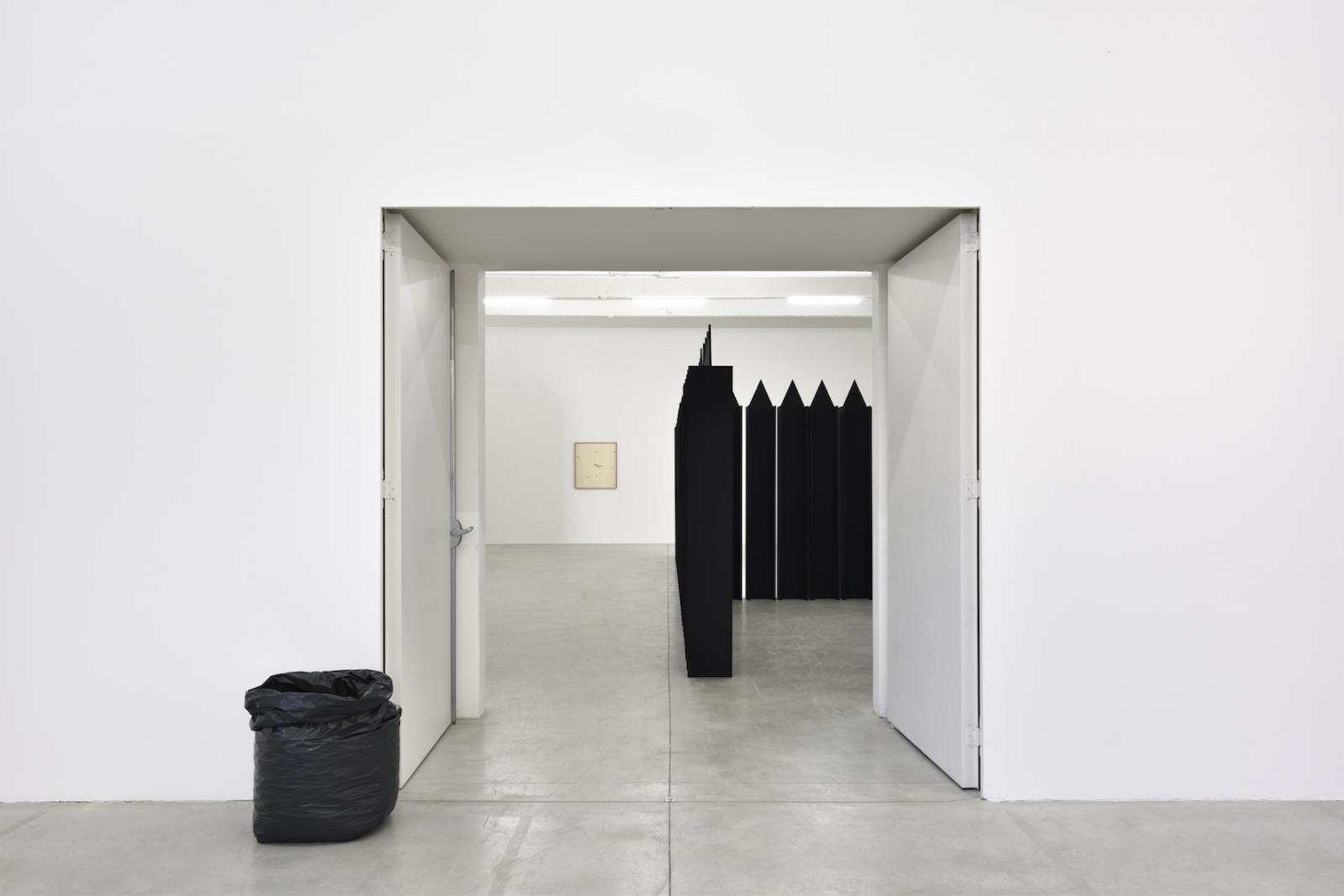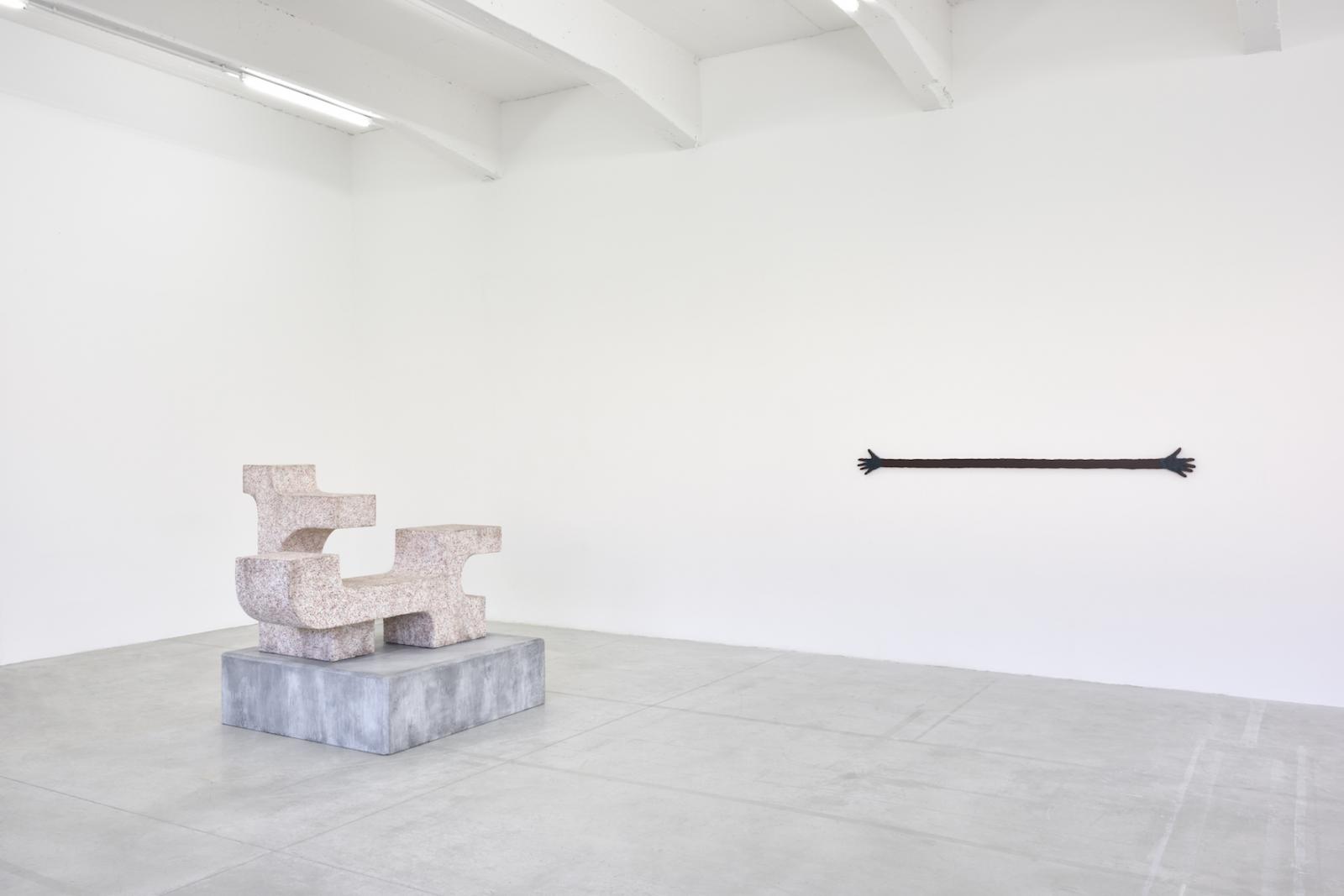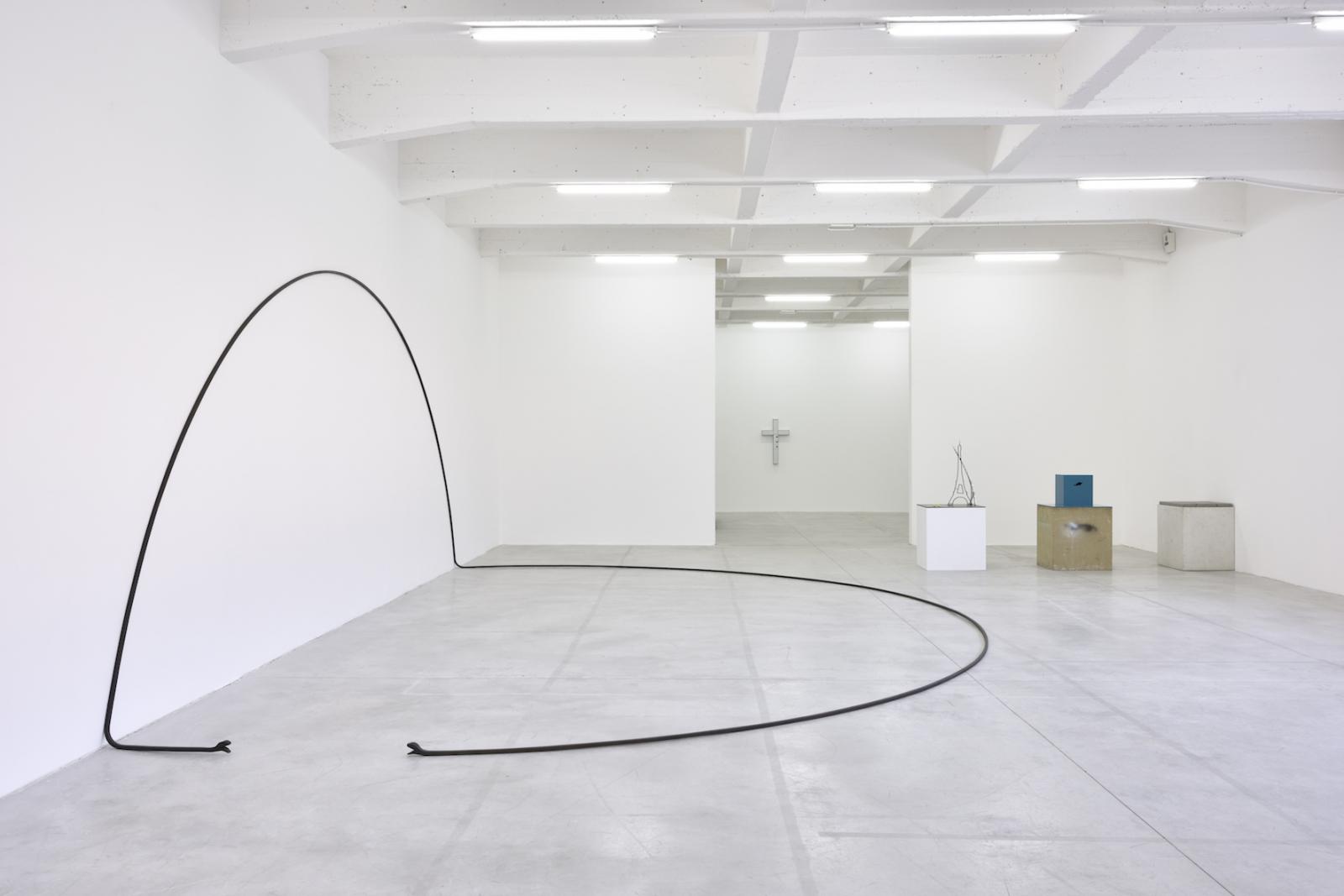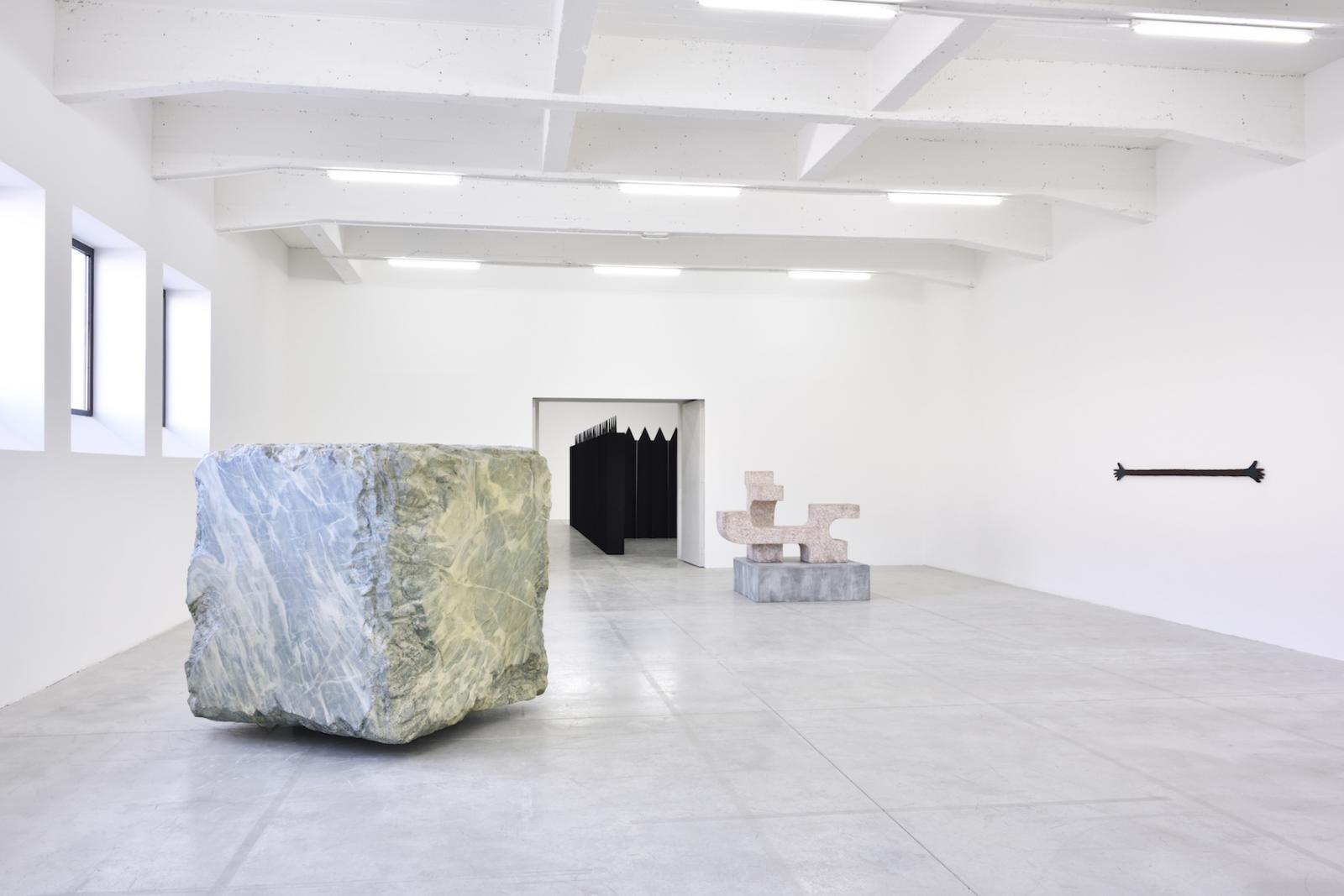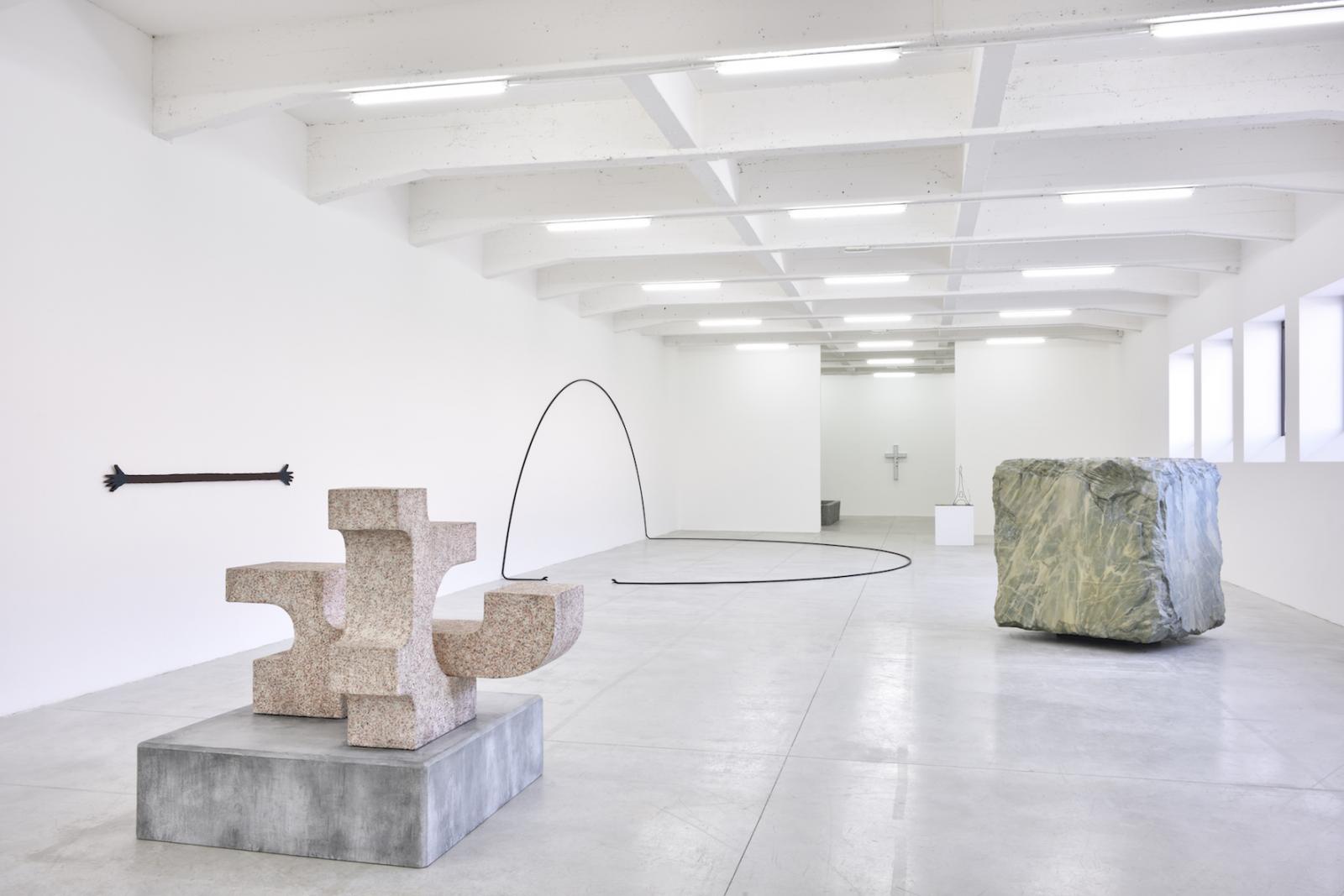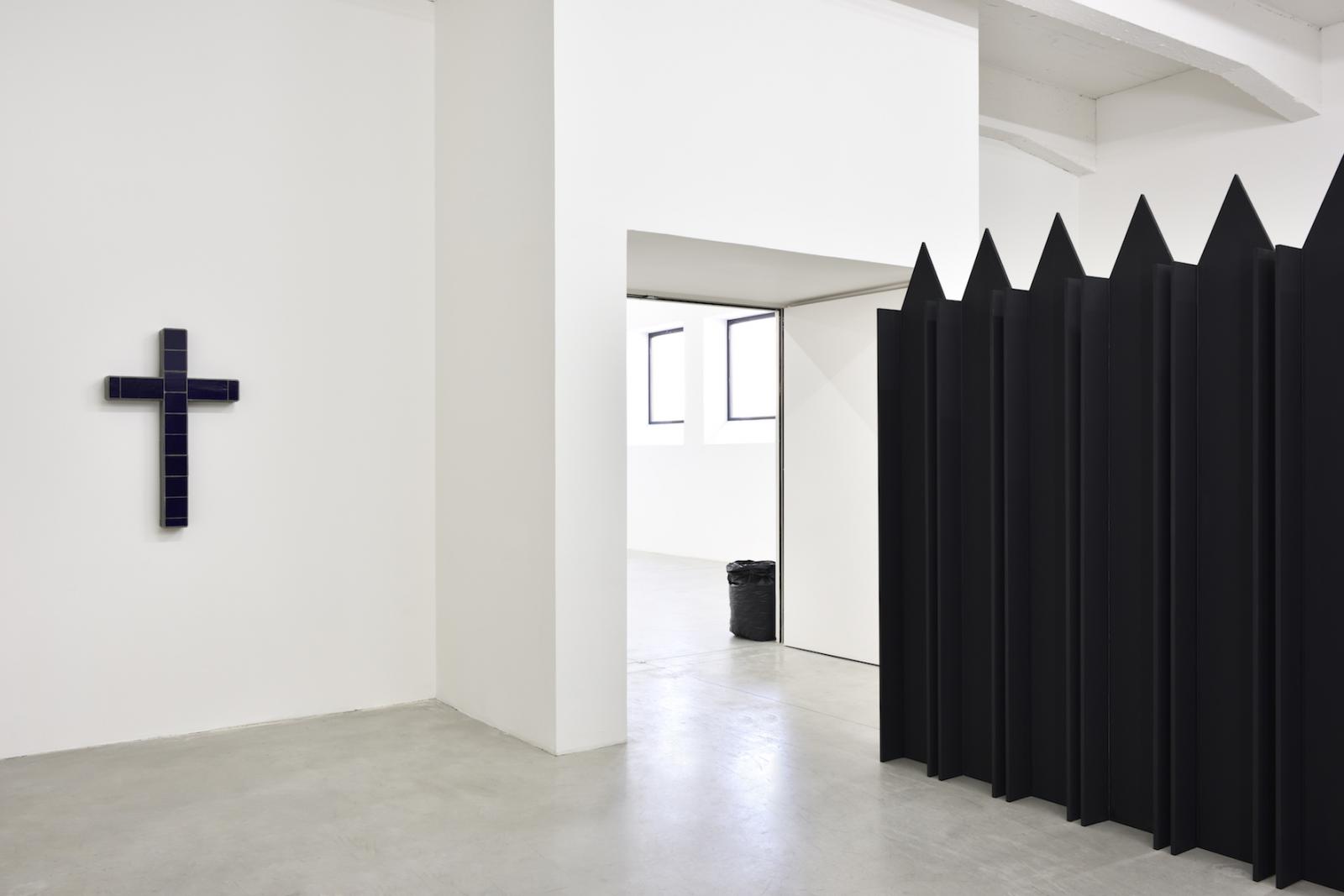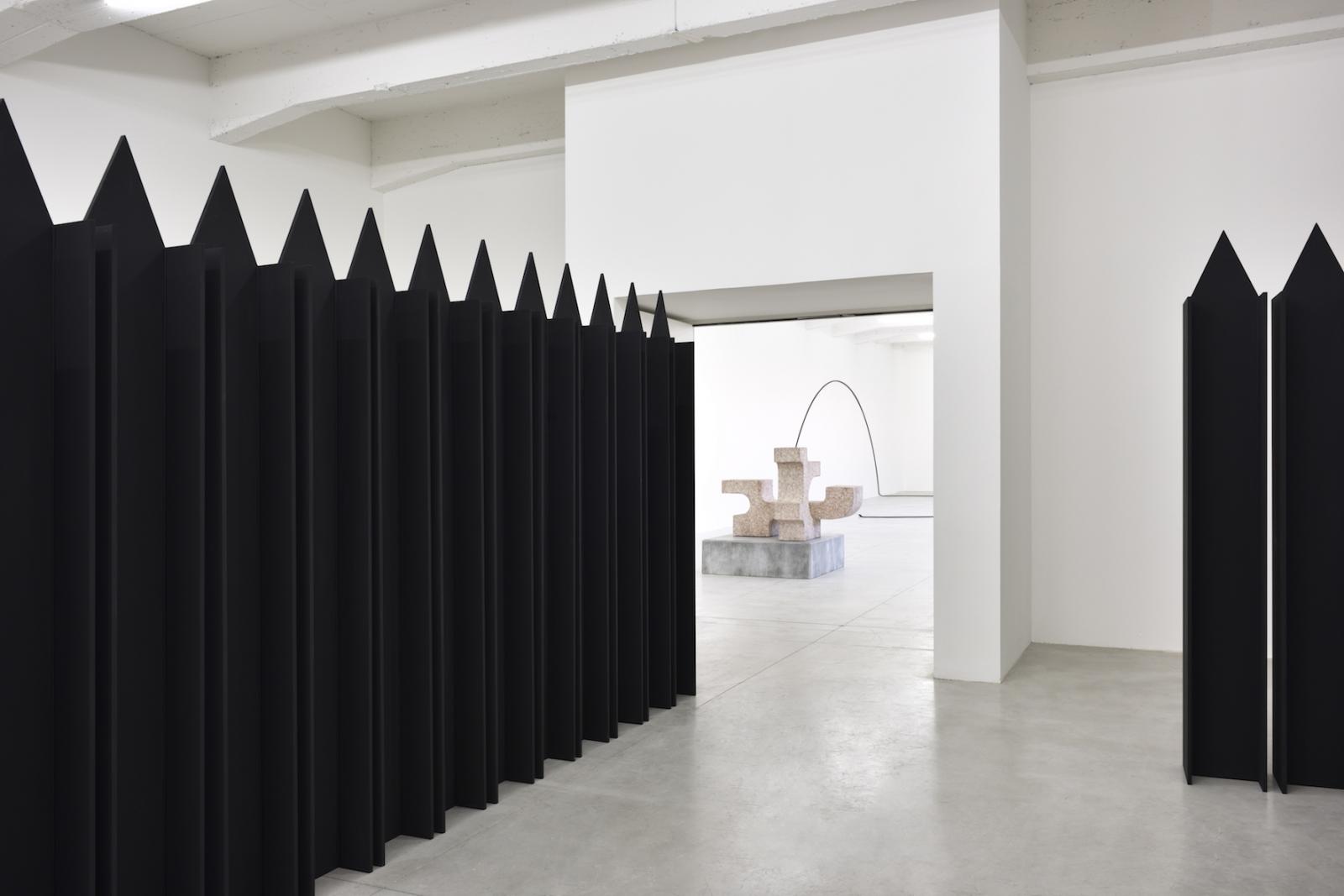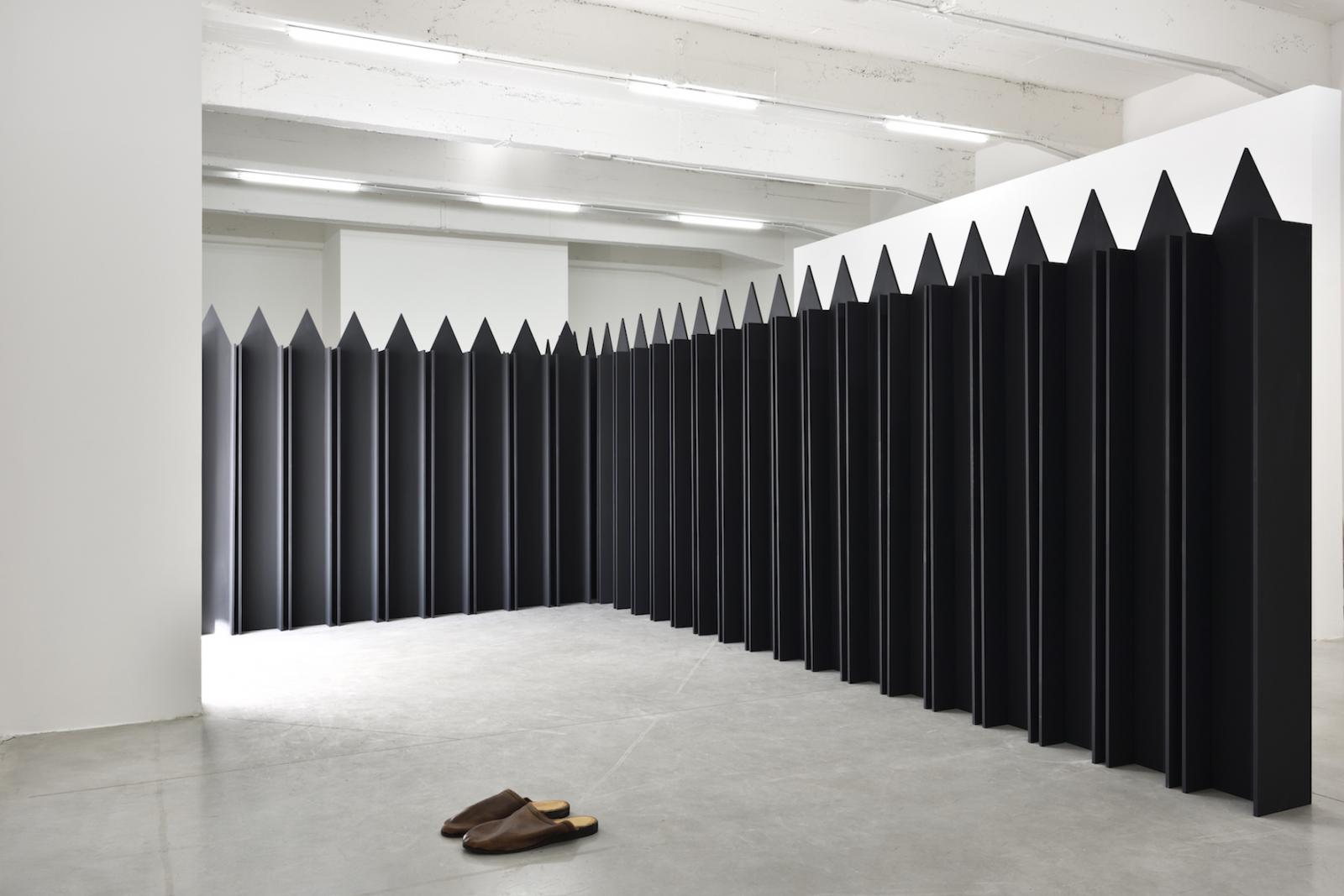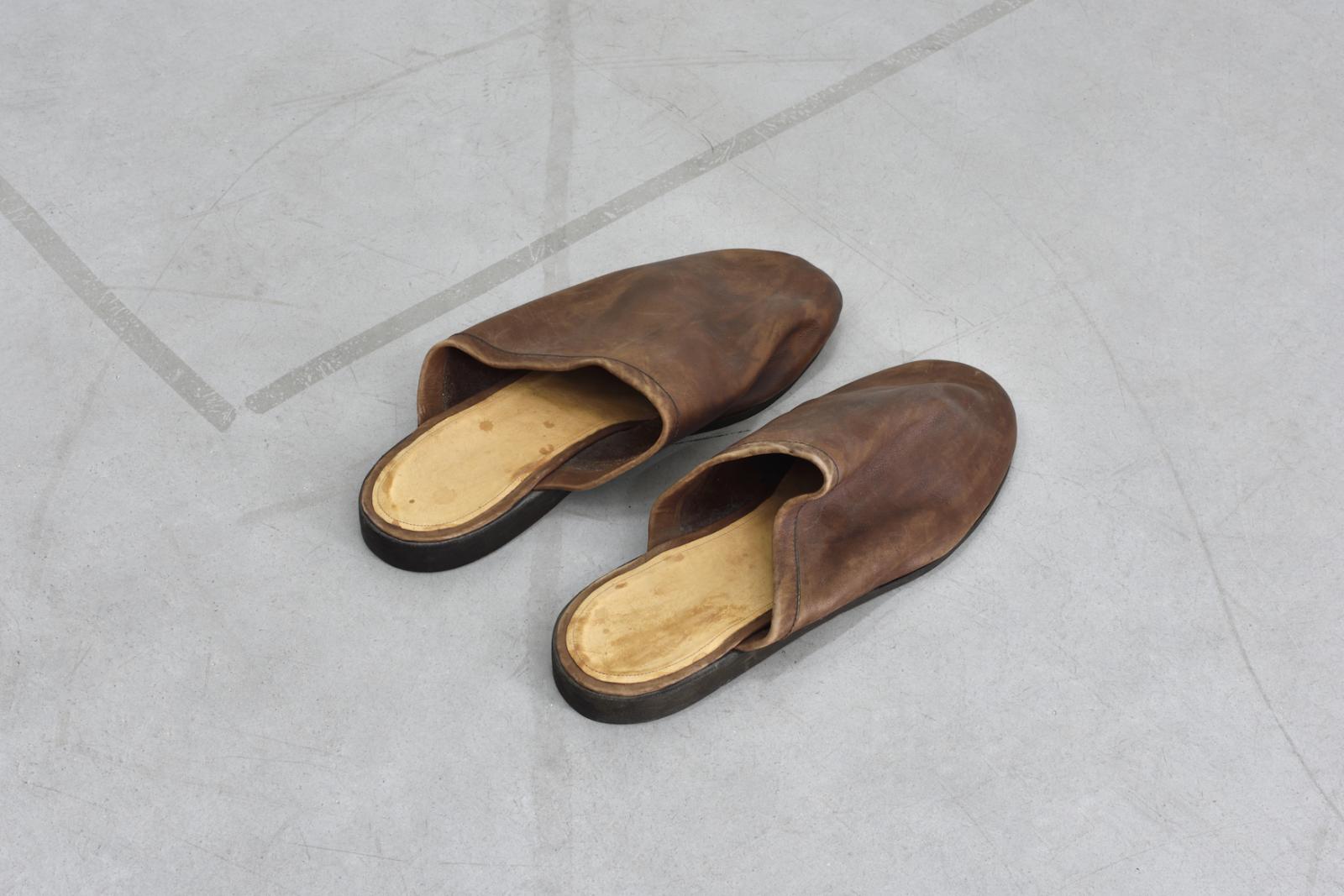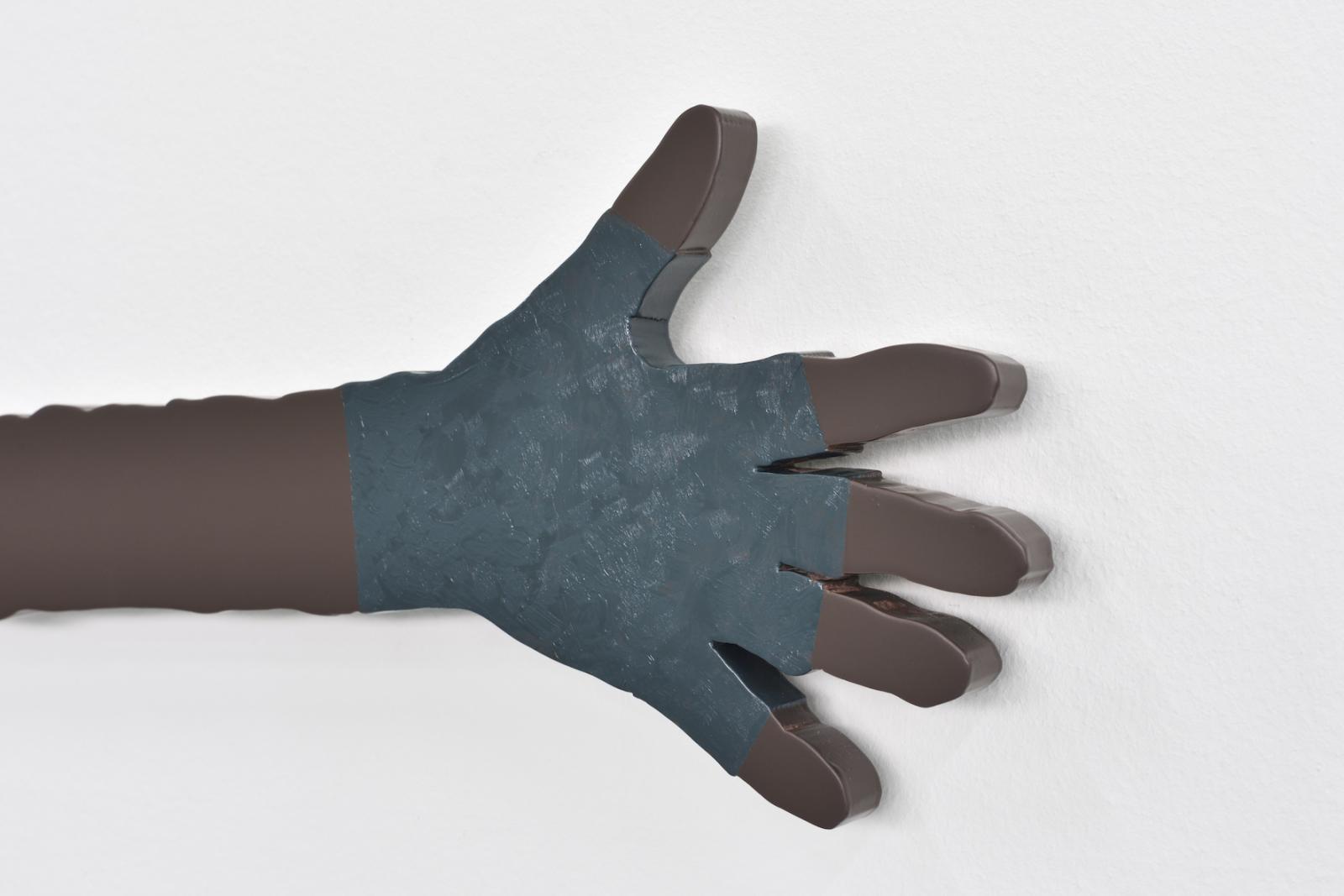Valentin Carron
Zéro Virgule Nul
Valentin Carron (1977, Fully, CH)
With the generous support of Pro Helvetia
Tschäggättä
Valentin Carron, Zéro Virgule Nul
Is the vernacular another memory lane for a French-speaking Swiss artist, when the wide black diamond ski slope carved by German-speaking Swiss artists is pleased to herald the great history of the modern deed?
A little bit of “Christianity” as well?
Illustrations in two steps:
The fact that Bruno Bischofberger has for years annexed Artforum’s back cover with full-page ads where age-old customs and traditions from the Valais Region include trumpeters in full-color costume at cattle contests, their steers adorned with frills and bronze cowbells; tree trunk or Appenzeller cheese wheel throwing contests with lederhosen-wearing strongmen; Tschäggättä masks; and all the carnivals and pagan harvest fests.
The anecdote according to which Dan Graham would have declared during an opening night in South Korea, a long time ago, that any group exhibition would need a slight touch of Christianity.
Modern Switzerland is a conservatory, a shelter for political exiles, dictators and revolutionaries, athlete-singers-wimpy-businessmen-tax exiles, for mad hatters paid with designer banknotes.
The history of modern art in Switzerland is a fairy tale for layabouts: everything is available, everything that the practice and its commerce need, everything that the artist may desire is within an easy reach of the stretcher—places to make a deal, any means of communication, buyers, institutional houses, educational places, focus groups, city-county-federal support. Everything is here and has been in the service of epic moments in the modern Swiss narrative: the concrete artists who majestically lived in the clannish rivalry between two figures, Max Bill and Richard Paul Lohse, who were celebrated and forgotten, without a real international career. The reassuring country had morphed into a transparent padded cell.
Then everything changed when Armleder, Disler, Federle and Mosset decamped to sow their oats in other worlds. Followed by young ‘uns always on the hunt yet fed by the federal hinterland!
Valentin Carron’s sculpture is concerned with cross-pollination, sharing materials, craftsmanship, modernist references and folk borrowings. That the country has established a pure national myth tied to participative citizenship ideals and seasonal traditions is still of a piece with the logic of a universe woven with satisfaction and self-sufficiency. The national folk heritage is just an addition of county particularisms that have been proclaimed to exist since time immemorial; going along the narrative are constituent objects, colored costumes, invigorating recipes and syncopated music. Roundabout art has bedecked itself with a bestiary of bear-carving lumberjacks and heraldic banners.
Valentin Carron’s appropriation of these vernacular witnesses is achieved through the grace of artificial materials: Styrofoam, fiberglass and resins for the benefit of approximate—therefore chosen—trompe l’oeils. Where the vernacular only swears by wood and wrought metal, art, to keep its distance, must make use of artificial and synthetic materials. That mix is of course more complicated than it seems. Contemporary fact mingles with geographies—the steep inclines of the vineyard-covered Valais hillsides, for example—with reminiscences, like the Huns at home with one another, when in the 4th century Attila’s colleagues decided to rest their horses and settle on the green grasslands of Central Switzerland, setting for eternity Mongoloid features on faces, on cheekbones. Funny!
The wrought iron on humble abodes’ railings isn’t wasted on white cubes, but salvaged at the last minute by Carron the blacksmith, who assigns it with other ambitions such as transforming it into a shamanic Native American snake, or a mimic by Bernar Venet who would have found its final “d” back in the floor/wall fold of an imposing circle...
The clock is never far away either, that Helvetian timekeeping occupation finding with Carron a version prettily splattered with impure blood...
In this compact retrospective, the artist invites us on a journey that doesn’t leave out the blanks (the Swiss cross), holes (Swiss cheese), or spikes (the Swiss Guard).
To find the right match or the perfect shoe size, so to speak, such is the lofty mission of Valentin Carron’s art. To such a point that his slippers-cum-homage to Illinois gentle giant Robert Pershing Wadlow leave us speechless. Your mom wears a 37AA shoe size!
What about André Tommasini (1931-2011) who in 1976 embellished the piazza of the Lausanne library with a pink granite sculpture that Carron has duplicated (Ravage with pink granite, 2014), one out of a mass of public art commissions that has lessened the interest in abstract sculpture to the extent of tired indifference, rattled now and then by a perverse jolt of recognition from enthusiasts on official modern art dating apps?
On one occasion I stated all the love I had for pet sculptures, these modestly sized artworks plopped at the foot of corporate buildings like a litany of stainless steel shapes that often sweep away contemporary creation. The large avenue that starts from the Anyang City Hall in South Korea is a pretty good example of this.
Let’s be clear, there is no irony in my words or in Valentin Carron’s discourse, no more than there is any opportunistic sanctification, but rather a true assimilation of this populace of quasi-modernist sculptures in the same way there is an integration of all the vernacular objects from counties or administrative subdivisions in our contemporary vocabulary.
Here we find another steep side of modern Switzerland, of a people overhauled in terms of entirely fabricated national narratives, sheltered within borders protected with Mossetian toblerones.
Carron, a sculptor, is someone who orchestrates—he has bulldozed and flattened all the Swiss marching bands’ brass instruments—an arranger, an assembler, a Feng Shui master when it comes to art, capable of orienting energies and condensing them into shapes and formats he distributes depending on necessities and opportunities.
—Franck Gautherot
